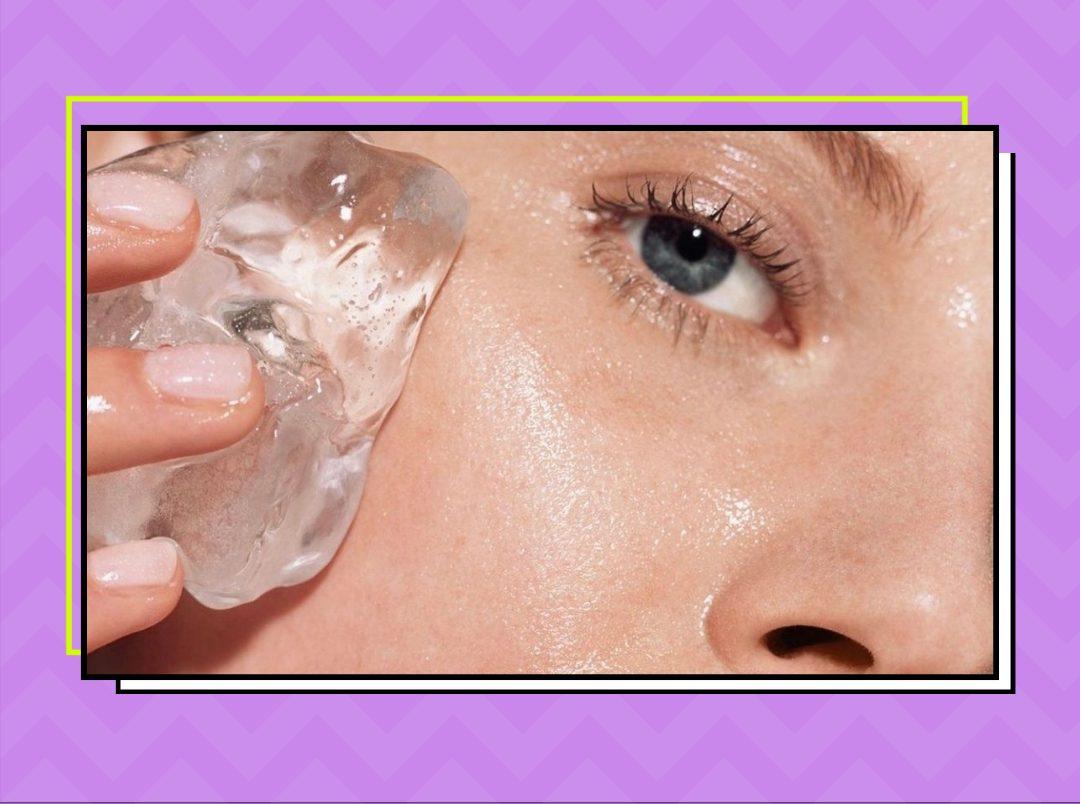The process of steaming your face has always been thought of as a standalone; and this applies to icing too. But a lot of research attests to the benefits of marrying the two rituals, and indulging in a few minutes of steaming before proceeding to rub the face with a couple of ice-cubes. But why? We decided to connect with Dr. Neha Sharma, Dermatologist Founder Estique Clinic, Gurugram, and asked her to break down the science behind this phenomenon for us. Ahead—your questions answered.
Should You Ice And Steam Your Face?
Do you recommend the process of steaming, and then icing your face?
According to Dr. Neha, “Steaming unclogs your pores, and releases any build-up of dead skin-cells, bacteria, and other impurities responsible for the clogging. It allows natural oils to flow freely, and prevents future blockage of pores as well. This process also helps loosen blackheads—making it easier to release them. It improves the circulation of blood in the face, and this promotes the appearance of a glow—and an extra flow of blood encourages the skin to build collagen and elastin too. It delivers oxygen to the skin for nourishment. After you steam your face for 2-3 minutes, wait for half an hour before rubbing ice on the skin. The act of icing closes these pores before dirt enters them. And it helps tone the face, and lifts it up—along with constricting the blood vessels. This creates a pulling effect that maximises absorption of skincare products. This synergistic action of these two steps makes it an excellent choice to incorporate in your skincare routine.”
The internet is full of the term ‘vascular flush’ (caused by steam and icing) and how it can be beneficial. Can you explain to us in simple layman terms, what it is, and how it benefits us?
“Steaming increases blood-circulation in the face, and it dilates the blood-vessels causing the area to flush. Because of an increase in blood-supply, there is more delivery of oxygen and other nutrients to the skin. Steaming is then followed by cooling which closes the pores, and constricts the capillaries. The iced part of the body responds to the cold treatment, and sends an increased flow of warm blood into the area—improving circulation even further. This flow of warm blood clears up the toxins as well, and this entire process helps the renewal and regeneration of the skin,” she explains.
Is this recommended for all skin types and safe for everyone to use?
Dr. Neha advises people who have extremely sensitive skin, dryness, redness, rosacea, infections or itching against following this.
Any downsides to doing this, and who should stay away from it?
To reiterate—though beneficial, anyone prone to redness must stay away from steaming and icing. If you have eczema or psoriasis, the heat from steaming can trigger ‘facial flushing’, and lead to redness all over the skin.
Even icing can cause redness and itching on the face—especially if you’re doing it for too long. If you have sensitive skin, rubbing ice over the face can cause your delicate capillaries to break—leading to inflammation. This does more damage than good. Make sure you’re not applying the cubes to your face directly—use a cloth or handkerchief as a buffer between your skin and the ice.
What kind of concerns/problem-areas can this method solve?
“Dull and dehydrated skin responds well to this process. This process reduces puffiness, and blackheads are easier to get rid of following steaming,” she says.
And that’s the science behind this trending topic.
Featured Image: Instagram



